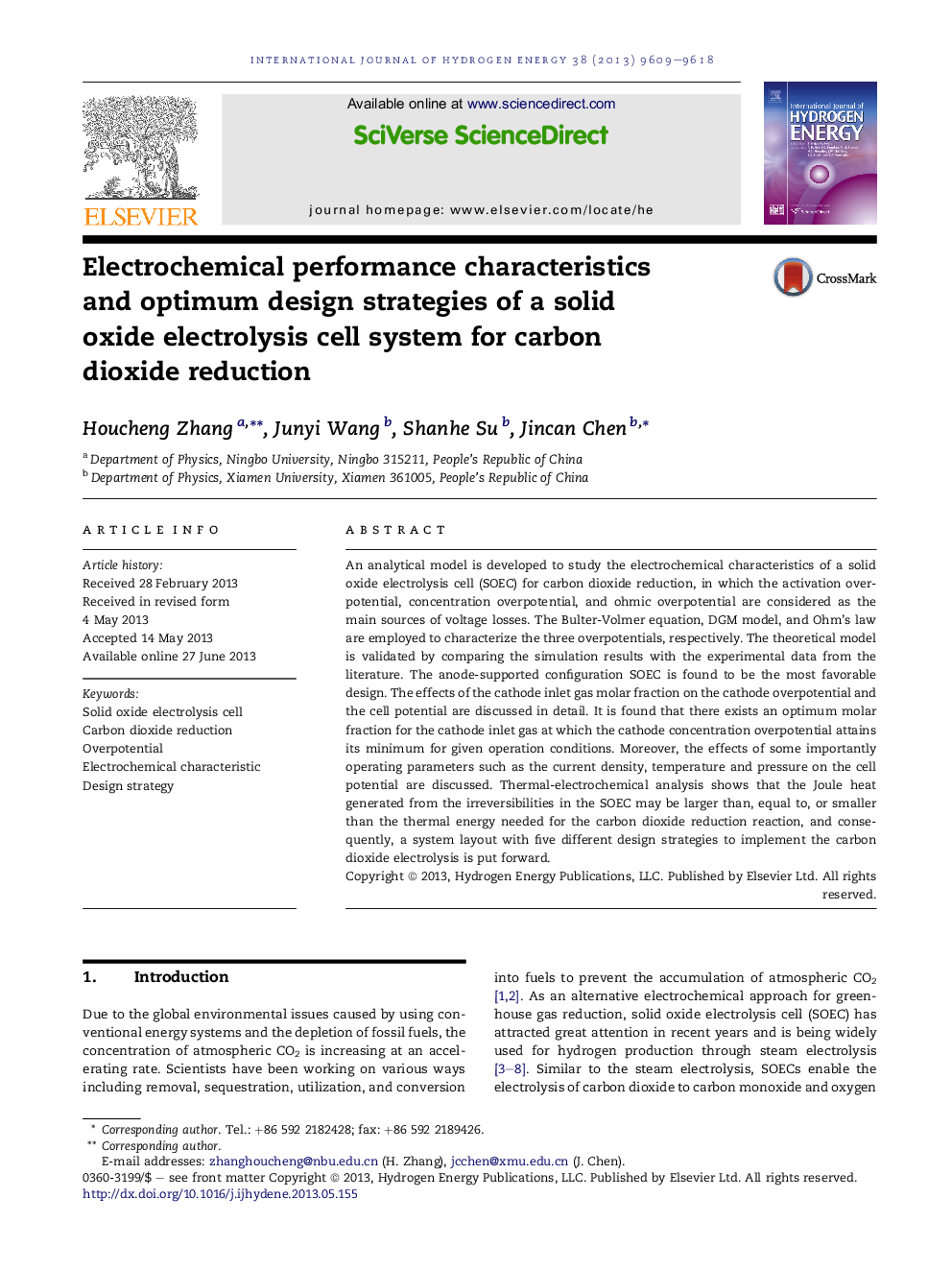| Article ID | Journal | Published Year | Pages | File Type |
|---|---|---|---|---|
| 7722150 | International Journal of Hydrogen Energy | 2013 | 10 Pages |
Abstract
An analytical model is developed to study the electrochemical characteristics of a solid oxide electrolysis cell (SOEC) for carbon dioxide reduction, in which the activation overpotential, concentration overpotential, and ohmic overpotential are considered as the main sources of voltage losses. The Bulter-Volmer equation, DGM model, and Ohm's law are employed to characterize the three overpotentials, respectively. The theoretical model is validated by comparing the simulation results with the experimental data from the literature. The anode-supported configuration SOEC is found to be the most favorable design. The effects of the cathode inlet gas molar fraction on the cathode overpotential and the cell potential are discussed in detail. It is found that there exists an optimum molar fraction for the cathode inlet gas at which the cathode concentration overpotential attains its minimum for given operation conditions. Moreover, the effects of some importantly operating parameters such as the current density, temperature and pressure on the cell potential are discussed. Thermal-electrochemical analysis shows that the Joule heat generated from the irreversibilities in the SOEC may be larger than, equal to, or smaller than the thermal energy needed for the carbon dioxide reduction reaction, and consequently, a system layout with five different design strategies to implement the carbon dioxide electrolysis is put forward.
Keywords
Related Topics
Physical Sciences and Engineering
Chemistry
Electrochemistry
Authors
Houcheng Zhang, Junyi Wang, Shanhe Su, Jincan Chen,
